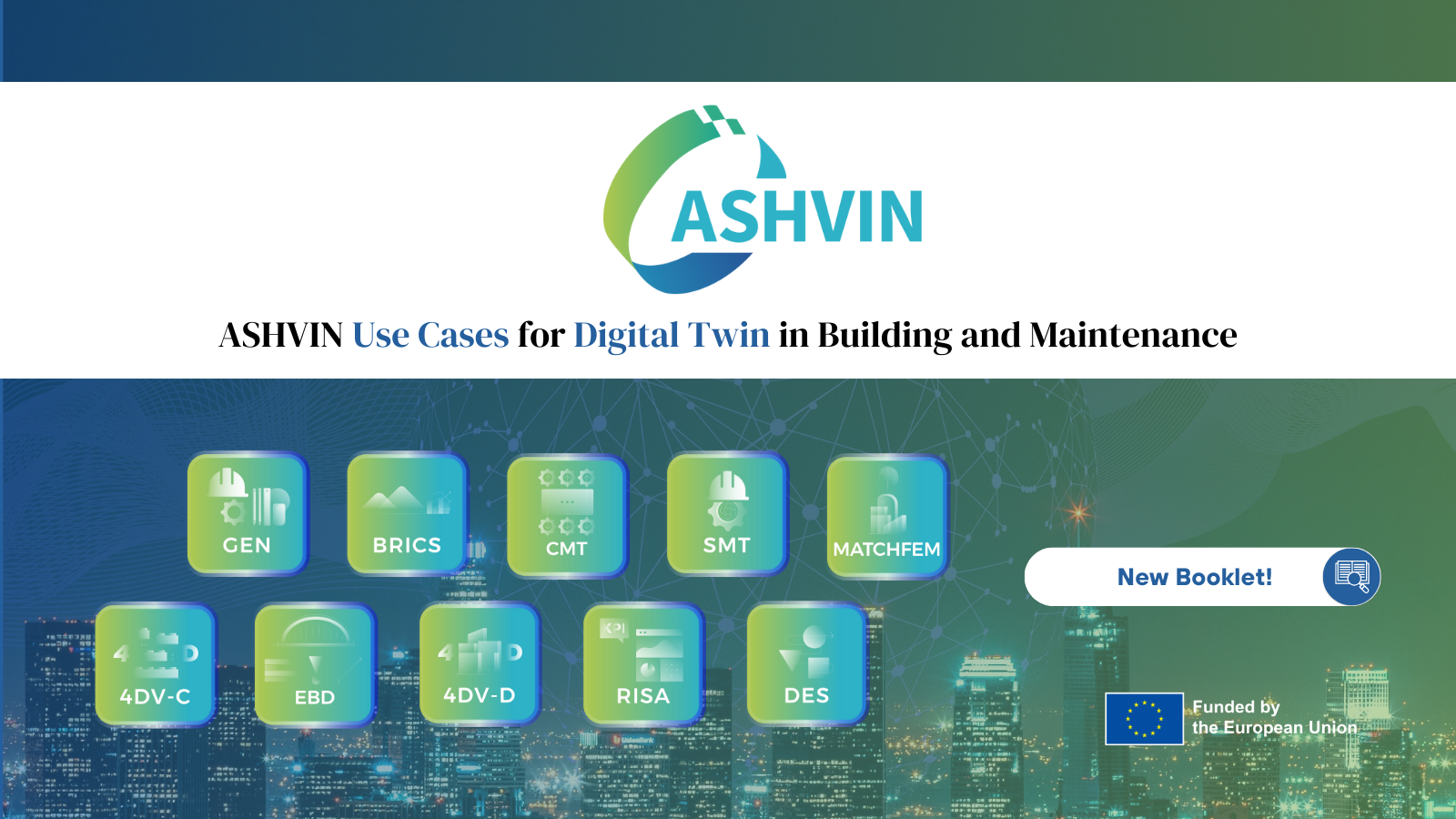Meeting with our Groundbreaking Researchers
In the ever-evolving landscape of construction, where digital twins redefine project methodologies, the importance of a human-centric approach is increasingly recognised. Our collaborative efforts with Erasmus University of Rotterdam place us at the intersection of technology and human dynamics, with Selma Toktas, a Post-Doc Research Fellow, working and researching on exploring these nuanced aspects.
We are pleased to present to you this new series of interviews with the new generation of researchers that participate in the ASHVIN project as a part of their MSc, PhD or Post-Doc studies. They will share their research approach in ASHVIN and plans to continue exploiting this work beyond the project.
Today, we present an insightful interview with Selma, delving into her experiences, research pursuits and her perspective on the role of digital twins in construction from a human-centric standpoint. She has worked on different projects, so she has a wide range of research interests, but her primary research focus is on the digital transformation of business, surveillance, privacy and social media data analytics. This conversation provides a neutral exploration of the symbiotic relationship between technology and human insight, offering an understanding of how a balanced approach enhances the impact of digital twins.
For a comprehensive overview, we invite you to watch this video, where Selma shares her valuable insights, setting the stage for further discussions in this first episode of our #ResearchStories series.
Hello Selma, we are very pleased to share this moment with you.
Hello, thanks for having me today.
Could you describe the scope of your research, and how it is related to Digital Building Twins?
Yes, sure!
I joined the ASHVIN project team as of March 2023 and will continue my work until the end of the project.
The studies I carried out within the scope of the ASHVIN project focus on two main issues:
- The first of these is best practices for digital twin-based privacy. It focuses on privacy and human factor analysis. As a part of the EUR team led by dr. Jason Pridmore, I have been working on precautions and recommendations on what to do to minimise the potential for invasive and harmful digital surveillance practices and to increase communication processes within the project, as well as to ensure the privacy of construction workers when using digital twin technologies. For this, we define a methodological process that includes a series of practices specifically aimed at ensuring the privacy of construction workers.
- Secondly, we focus on the availability of infrastructure data. We ask whether it is possible to make infrastructure data accessible to relevant stakeholders such as industry professionals, researchers, scientists, and any other interest groups. To find the answer to this question, we are investigating whether maintenance infrastructure data can be presented on demo sites where the ASHVIN digital twin is implemented. Of course, we also explain what the risks of disclosing infrastructure data to the public may be.
We prioritise data security by building the path to a transparent, accountable and reliable open infrastructure data governance framework in the construction industry in Europe. So as a result of all our working, ASHVIN offers five recommendations that should be reviewed in relation to making public infrastructure data open. We described these recommendations as an ADAPT framework.
This framework points out the necessity of:
- Available,
- Demonstrative,
- Accountable,
- Proportional,
- Transparent data.
By complying with these five principles, not only the risks and concerns about opening infrastructure data can be addressed but reduces the potential for unequal access and unfair competition among stakeholders.
Which aspects of ASHVIN are relevant to your research ?
The digital transformation process has been experienced by all sectors today. The technologies being used in this process and the sanctification of data remind us of the two faces of Janus. On the one hand, the positive features, on the other hand, the risks it brings. Therefore my primary focus on data security and privacy.
My work includes offering solutions on how ASHVIN can have a perspective that includes involving employees and stakeholders in the decision-making process, establishing clear ethical rules, and best practices that prioritise privacy and security.
The other aspect is related to public infrastructure data. We discuss whether and what maintenance infrastructure data can be made available in demo sites where ASHVIN digital twin is applied.
Which challenges have you faced while doing your research?
The interviewing part with the workers while determining the best practices was a bit challenging.
In our work on making maintenance data open, it was challenging that there was no full awareness of our research object.
Although the concept of open data has become an increasingly targeted and desired concept for most government institutions and organisations, there are difficulties in its implementation at the operational level. Some struggle to share their internal data with others because they do not have sufficient knowledge of how to adapt sensitive data for open data publication.
One last question, the ASHVIN project is ending in March 2024, what will you take with you from the project for the next steps of your research and professional development ?
The outputs of this project can actually be adapted not only to the construction industry but also to the digital transformation processes of other industries. The work I have done before also matches the outputs of the ASHVIN project. So, the industry, in general, is currently very focused on technology and data analysis. The economic advantages of this technology and data are mostly discussed, but there is an invisible part of the iceberg. That is the security and privacy of this data. Also, in the work we carried out in the ASHVIN project, I discovered once and once again that in the digital transformation era, the human factor cannot be underestimated. It’s not just about technology; it’s about people, culture, and leadership. Organisations that prioritise the human element of change are more likely to succeed in their digital transformation journey.
We are developing an approach including principles on how to ensure data minimization and comply with privacy principles while technologies such as DT and AI effectively produce the targeted results. These also include involving employees and stakeholders in decision-making processes, establishing clear codes of ethics, and establishing best practices that prioritise privacy and security. I think this approach should also be applied to the digital transformation process of all other sectors.
Thanks for your time!
💡 Did you know that behind the scenes in the ASHVIN project, there are over 30 university students from different degrees, contributing to the project’s research related to the technical development of the digital twin system and its demonstration in real-life sites?
Our academic partners, the Technical University of Berlin (TUB), Erasmus University of Rotterdam (EUR) and Polytechnic University of Catalonia (UPC) oversee their involvement in this project.





